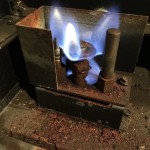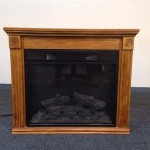Understanding Gas Vented Fireplaces: A Comprehensive Guide
Gas vented fireplaces offer a convenient and aesthetically pleasing alternative to traditional wood-burning fireplaces. They provide the ambiance of a real fire without the labor-intensive process of procuring, storing, and burning wood, and without the associated mess of ash and soot. These fireplaces utilize natural gas or propane as fuel and require a venting system to safely exhaust combustion byproducts outside the home.
The core principle behind a gas vented fireplace is the controlled combustion of fuel within a sealed firebox. This combustion generates heat and produces exhaust gases, primarily carbon dioxide, water vapor, and nitrogen, along with trace amounts of other compounds. The venting system plays a crucial role in removing these gases from the dwelling, preventing the buildup of potentially harmful substances and ensuring a safe indoor environment.
The efficiency and appearance of gas vented fireplaces have improved significantly over the years. Modern models boast realistic flame patterns, adjustable heat output, and remote control operation. They can be installed in a variety of locations, including existing fireplace openings and new construction projects, offering flexibility in design and placement.
Types of Gas Venting Systems
The type of venting system employed by a gas fireplace significantly impacts its installation requirements, efficiency, and overall performance. Understanding the different types of venting systems is crucial for selecting the appropriate fireplace for a specific application.
Natural Vent (or B-Vent) Fireplaces: These fireplaces rely on natural convection to exhaust combustion byproducts. A vertical vent pipe, typically routed through the roof, allows hot gases to rise and escape due to the buoyancy effect. Natural vent fireplaces are generally less expensive to install than direct vent models; however, they are also less energy-efficient. The draft created by the vent can draw warm air out of the room, reducing the overall heating effectiveness of the fireplace. They also require a taller vent run to ensure proper draft, limiting their placement possibilities in some homes.
Natural vent systems typically require a chimney or a dedicated B-vent pipe, which is a double-walled metal pipe designed specifically for venting gas appliances. The diameter of the vent pipe is critical and must be sized correctly based on the fireplace's BTU input. Improperly sized venting can lead to incomplete combustion, carbon monoxide leakage, and other safety hazards. Regular inspection and maintenance of the vent system are essential to ensure its continued safe operation.
Direct Vent Fireplaces: Direct vent fireplaces represent a significant advancement in gas fireplace technology. They employ a sealed combustion chamber that draws combustion air from outside the home and exhausts combustion byproducts directly back outside through a coaxial or concentric vent system. This sealed design eliminates the need for a chimney and prevents the fireplace from drawing air from the room, resulting in significantly higher energy efficiency compared to natural vent models.
The coaxial vent system consists of two pipes, one inside the other. The inner pipe exhausts combustion gases, while the outer pipe draws in fresh air for combustion. The concentric vent system utilizes two pipes arranged side-by-side. Direct vent systems can be vented horizontally through a wall or vertically through the roof, offering greater installation flexibility. They also allow for zone heating, as the sealed combustion chamber prevents drafts and reduces heat loss when the fireplace is not in operation.
Direct vent fireplaces are generally more expensive than natural vent models due to their more complex design and venting requirements. However, their higher efficiency, improved safety, and greater installation flexibility often make them a more attractive option in the long run. Furthermore, some building codes require direct vent systems for new construction or renovations.
Vent-Free Fireplaces: While technically gas fireplaces, vent-free models operate without any venting system. They are designed to burn fuel so cleanly that the exhaust gases are deemed safe to release directly into the living space. However, the safety of vent-free fireplaces remains a subject of debate. They are equipped with oxygen depletion sensors (ODS) that shut off the gas supply if the oxygen level in the room drops to a dangerous level. However, even with these safety features, vent-free fireplaces can still contribute to indoor air pollution and may not be suitable for individuals with respiratory problems or sensitivities.
Many jurisdictions have restrictions or outright bans on vent-free fireplaces due to concerns about indoor air quality and potential safety hazards. Before considering a vent-free fireplace, it is crucial to check local building codes and regulations. Furthermore, proper room ventilation is essential when operating a vent-free fireplace, even with the ODS system in place. It is generally recommended to open a window slightly to ensure adequate air exchange.
Factors Influencing Gas Fireplace Efficiency
The efficiency of a gas vented fireplace is a crucial factor to consider, as it directly impacts its heating performance and operating costs. Several factors influence the efficiency of these appliances, including the type of venting system, the burner design, and the presence of features such as electronic ignition and thermostatic control.
Venting System Efficiency: As discussed earlier, direct vent fireplaces are generally more energy-efficient than natural vent models. The sealed combustion chamber of a direct vent fireplace prevents the loss of heated air through the vent, resulting in a higher percentage of the generated heat being delivered to the room. Natural vent fireplaces, on the other hand, can lose a significant amount of heat through the venting system, reducing their overall efficiency. The height and diameter of the vent pipe also affect the efficiency of natural vent systems. A taller vent pipe can increase draft and improve combustion, but it can also lead to greater heat loss.
Burner Design: The design of the gas burner plays a critical role in combustion efficiency. Modern gas fireplaces often incorporate advanced burner designs that promote more complete and efficient combustion. These designs may include features such as multiple burner ports, specialized air-fuel mixing systems, and ceramic logs that radiate heat more effectively. These design improvements help to maximize the heat output from a given amount of fuel, resulting in higher efficiency and lower operating costs.
Electronic Ignition vs. Standing Pilot: Older gas fireplaces typically utilize a standing pilot light, which continuously burns a small amount of gas to ignite the main burner. While convenient, a standing pilot light consumes a significant amount of gas over time, even when the fireplace is not in use. Modern gas fireplaces often feature electronic ignition systems that eliminate the need for a standing pilot. Electronic ignition systems use an electric spark to ignite the main burner only when the fireplace is turned on, saving energy and reducing operating costs. Some models also incorporate battery backup systems to ensure operation during power outages.
Thermostatic Control: Thermostatic control allows the fireplace to maintain a consistent room temperature by automatically adjusting the gas flow to the burner. This feature helps to prevent overheating and reduces energy waste. Thermostatic control can be achieved through various methods, including manual thermostats, programmable thermostats, and remote control systems. Programmable thermostats allow for setting different temperature levels for different times of the day, further optimizing energy efficiency.
Glass Doors and Heat Exchangers: Glass doors can help to prevent heat loss through radiation and convection when the fireplace is not in use. They also provide a safety barrier, preventing sparks and embers from escaping the firebox. Some gas fireplaces also incorporate heat exchangers, which are designed to capture and transfer heat from the exhaust gases to the room air. Heat exchangers can significantly improve the efficiency of a gas fireplace by reducing heat loss through the venting system.
Safety Considerations for Gas Vented Fireplaces
While gas vented fireplaces offer numerous benefits, safety should always be a top priority. Proper installation, regular maintenance, and adherence to safety guidelines are essential to prevent accidents and ensure the safe operation of these appliances.
Professional Installation: Gas fireplace installation should always be performed by a qualified and licensed professional. A professional installer will have the expertise to properly size the vent system, connect the gas supply, and ensure that the fireplace meets all applicable safety codes and regulations. Improper installation can lead to gas leaks, carbon monoxide poisoning, and other serious hazards.
Carbon Monoxide Detectors: Carbon monoxide (CO) is a colorless, odorless, and deadly gas produced by incomplete combustion. It is essential to install carbon monoxide detectors in the home, particularly near sleeping areas. CO detectors should be tested regularly and replaced according to the manufacturer's instructions. If a CO detector alarms, evacuate the premises immediately and call emergency services.
Regular Maintenance: Regular maintenance is crucial to ensure the safe and efficient operation of a gas fireplace. The vent system should be inspected annually for obstructions, corrosion, and leaks. The burner should be cleaned regularly to remove dust and debris that can interfere with combustion. The pilot light (if applicable) should be inspected for proper operation. A qualified technician should perform a comprehensive inspection and service of the fireplace at least once a year.
Gas Leak Detection: If a gas leak is suspected, immediately evacuate the premises and call the gas company or emergency services. Do not attempt to locate the leak yourself, and do not use any electrical devices that could create a spark. Gas leaks can be detected by a distinct rotten egg odor, which is added to natural gas to make it detectable. Propane, on the other hand, has a naturally strong, unpleasant odor.
Child and Pet Safety: The glass front of a gas fireplace can become extremely hot during operation, posing a burn risk to children and pets. It is important to supervise children and pets when the fireplace is in use and to keep them a safe distance away. Consider installing a safety screen or barrier to prevent accidental contact with the hot glass.
Proper Ventilation: While direct vent fireplaces draw combustion air from outside, proper ventilation is still important to maintain good indoor air quality. Open windows and doors periodically to allow fresh air to circulate, especially when the fireplace is in use. Avoid operating vent-free fireplaces in enclosed spaces with limited ventilation.
Adherence to Manufacturer's Instructions: Always follow the manufacturer's instructions for operation, maintenance, and troubleshooting. Do not attempt to modify or repair the fireplace yourself unless you are a qualified technician. Using unauthorized parts or making improper modifications can void the warranty and create safety hazards. Store flammable materials away from the fireplace to prevent accidental fires.

Napoleon Ascent Dx42 Direct Vent Gas Burning Fireplace

Oakville Gdix4 Direct Vent Gas Fireplace Inset By Napoleon

Kingsman Zero Clearance Direct Vent Gas Fireplace 36 Wide By 24 North Woods Grills

Rushmore 30 Direct Vent Fireplace Insert Fine S Gas

Majestic Direct Vent Gas Fireplace Quartz 36 Intellifire Touch Ignition System

Pros And Cons Of Direct Vent Gas Fireplaces Tarantin Industries

Freestanding High Efficiency Direct Vent Gas Fireplaces Inserts Stoves Godby Hearth And Home

Starfire Direct Vent Gas Fireplace Cypurs Air

Direct Vent Gas Fireplace Supreme Hearth

How To Find The Most Efficient Direct Vent Gas Fireplace For Your Next Project
Related Posts








